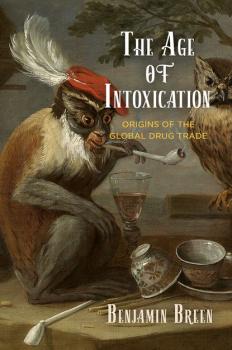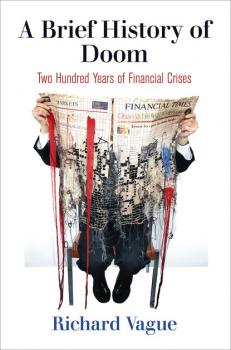ТОП просматриваемых книг сайта:
Историческая литература
Различные книги в жанре Историческая литература, доступные для чтения и скачиванияАннотация
At first glance, Barbara Kalish fit the stereotype of a 1950s wife and mother. Married at eighteen, Barbara lived with her husband and two daughters in a California suburb, where she was president of the Parent-Teacher Association. At a PTA training conference in San Francisco, Barbara met Pearl, another PTA president who also had two children and happened to live only a few blocks away from her. To Barbara, Pearl was «the most gorgeous woman in the world,» and the two began an affair that lasted over a decade. Through interviews, diaries, memoirs, and letters, Her Neighbor's Wife traces the stories of hundreds of women, like Barbara Kalish, who struggled to balance marriage and same-sex desire in the postwar United States. In doing so, Lauren Jae Gutterman draws our attention away from the postwar landscape of urban gay bars and into the homes of married women, who tended to engage in affairs with wives and mothers they met in the context of their daily lives: through work, at church, or in their neighborhoods. In the late 1960s and 1970s, the lesbian feminist movement and the no-fault divorce revolution transformed the lives of wives who desired women. Women could now choose to divorce their husbands in order to lead openly lesbian or bisexual lives; increasingly, however, these women were confronted by hostile state discrimination, typically in legal battles over child custody. Well into the 1980s, many women remained ambivalent about divorce and resistant to labeling themselves as lesbian, therefore complicating a simple interpretation of their lives and relationship choices. By revealing the extent to which marriage has historically permitted space for wives' relationships with other women, Her Neighbor's Wife calls into question the presumed straightness of traditional American marriage.
Информация о книге
Автор произведения Lauren Jae Gutterman
Аннотация
Ever since introducing the concept in the late 1980s, historians have been debating the origins, nature, scope, and limitations of the New Deal order—the combination of ideas, electoral and governing strategies, redistributive social policies, and full employment economics that became the standard-bearer for political liberalism in the wake of the Great Depression and commanded Democratic majorities for decades. In the decline and break-up of the New Deal coalition historians found keys to understanding the transformations that, by the late twentieth century, were shifting American politics to the right. In Beyond the New Deal Order , contributors bring fresh perspective to the historic meaning and significance of New Deal liberalism while identifying the elements of a distinctively «neoliberal» politics that emerged in its wake. Part I offers contemporary interpretations of the New Deal with essays that focus on its approach to economic security and inequality, its view of participatory governance, and its impact on the Republican party as well as Congressional politics. Part II features essays that examine how intersectional inequities of class, race, and gender were embedded in New Deal labor law, labor standards, and economic policy and brought demands for employment, economic justice, and collective bargaining protections to the forefront of civil rights and social movement agendas throughout the postwar decades. Part III considers the precepts and defining narratives of a «post» New Deal political structure, while the closing essay contemplates the extent to which we may now be witnessing the end of a neoliberal system anchored in free-market ideology, neo-Victorian moral aspirations, and post-Communist global politics. Contributors : Eileen Boris, Angus Burgin, Gary Gerstle, Romain Huret, Meg Jacobs, Michael Kazin, Sophia Lee, Nelson Lichtenstein, Joe McCartin, Alice O'Connor, Paul Sabin, Reuel Schiller, Kit Smemo, David Stein, Jean-Christian Vinel, Julian Zelizer.
Информация о книге
Автор произведения Группа авторов
Аннотация
In her 1855 fictionalized autobiography, Mary Gove Nichols told the story of her emancipation from her first unhappy marriage, during which her husband controlled her body, her labor, and her daughter. Rather than the more familiar metaphor of prostitution, Nichols used adultery to define loveless marriages as a betrayal of the self, a consequence far more serious than the violation of a legal contract. Nichols was not alone. In Unfaithful , Carol Faulkner places this view of adultery at the center of nineteenth-century efforts to redefine marriage as a voluntary relationship in which love alone determined fidelity. After the Revolution, Americans understood adultery as a sin against God and a crime against the people. A betrayal of marriage vows, adultery was a cause for divorce in most states as well as a basis for civil suits. Faulkner depicts an array of nineteenth-century social reformers who challenged the restrictive legal institution of marriage, redefining adultery as a matter of individual choice and love. She traces the beginning of this redefinition of adultery to the evangelical ferment of the 1830s and 1840s, when perfectionists like John Humphrey Noyes, founder of the Oneida Community, concluded that marriage obstructed the individual's relationship to God. In the 1840s and 1850s, spiritualist, feminist, and free love critics of marriage fueled a growing debate over adultery and marriage by emphasizing true love and consent. After the Civil War, activists turned the act of adultery into a form of civil disobedience, culminating in Victoria Woodhull's publicly charging the Reverend Henry Ward Beecher with marital infidelity. Unfaithful explores how nineteenth-century reformers mobilized both the metaphor and the act of adultery to redefine marriage between 1830 and 1880 and the ways in which their criticisms of the legal institution contributed to a larger transformation of marital and gender relations that continues to this day.
Аннотация
Eating the flesh of an Egyptian mummy prevents the plague. Distilled poppies reduce melancholy. A Turkish drink called coffee increases alertness. Tobacco cures cancer. Such beliefs circulated in the seventeenth and eighteenth centuries, an era when the term «drug» encompassed everything from herbs and spices—like nutmeg, cinnamon, and chamomile—to such deadly poisons as lead, mercury, and arsenic. In The Age of Intoxication , Benjamin Breen offers a window into a time when drugs were not yet separated into categories—illicit and licit, recreational and medicinal, modern and traditional—and there was no barrier between the drug dealer and the pharmacist. Focusing on the Portuguese colonies in Brazil and Angola and on the imperial capital of Lisbon, Breen examines the process by which novel drugs were located, commodified, and consumed. He then turns his attention to the British Empire, arguing that it owed much of its success in this period to its usurpation of the Portuguese drug networks. From the sickly sweet tobacco that helped finance the Atlantic slave trade to the cannabis that an East Indies merchant sold to the natural philosopher Robert Hooke in one of the earliest European coffeehouses, Breen shows how drugs have been entangled with science and empire from the very beginning. Featuring numerous illuminating anecdotes and a cast of characters that includes merchants, slaves, shamans, prophets, inquisitors, and alchemists, The Age of Intoxication rethinks a history of drugs and the early drug trade that has too often been framed as opposites—between medicinal and recreational, legal and illegal, good and evil. Breen argues that, in order to guide drug policy toward a fairer and more informed course, we first need to understand who and what set the global drug trade in motion.
Информация о книге
Автор произведения Benjamin Breen
Аннотация
An instant is the shortest span in which time can be divided and experienced. In an instant, there is no duration: it is an interruption that happens in the blink of an eye. For the ancient Greeks, kairos , the time in which exceptional, unrepeatable events occurred, was opposed to chronos , measurable, quantitative, and uniform time. In The Moment of Rupture , Humberto Beck argues that during the years of the First World War, the Russian Revolution, and the rise of fascism in Germany, the notion of the instant migrated from philosophy and aesthetics into politics and became a conceptual framework for the interpretation of collective historical experience that, in turn, transformed the subjective perception of time. According to Beck, a significant juncture occurred in Germany between 1914 and 1940, when a modern tradition of reflection on the instant—spanning the poetry of Goethe, the historical self-understanding of the French Revolution, the aesthetics of early Romanticism, the philosophies of Søren Kierkegaard and Friedrich Nietzsche, and the artistic and literary practices of Charles Baudelaire and the avant gardes—interacted with a new experience of historical time based on rupture and abrupt discontinuity. Beck locates in this juncture three German thinkers—Ernst Jünger, Ernst Bloch, and Walter Benjamin—who fused the consciousness of war, crisis, catastrophe, and revolution with the literary and philosophical formulations of the instantaneous and the sudden in order to intellectually represent an era marked by the dissolution between the extraordinary and the everyday. The Moment of Rupture demonstrates how Jünger, Bloch, and Benjamin produced a constellation of figures of sudden temporality that contributed to the formation of what Beck calls a distinct «regime of historicity,» a mode of experiencing time based on the notion of a discontinuous present.
Информация о книге
Автор произведения Humberto Beck
Аннотация
Financial crises happen time and again in post-industrial economies—and they are extraordinarily damaging. Building on insights gleaned from many years of work in the banking industry and drawing on a vast trove of data, Richard Vague argues that such crises follow a pattern that makes them both predictable and avoidable. A Brief History of Doom examines a series of major crises over the past 200 years in the United States, Great Britain, Germany, France, Japan, and China—including the Great Depression and the economic meltdown of 2008. Vague demonstrates that the over-accumulation of private debt does a better job than any other variable of explaining and predicting financial crises. In a series of clear and gripping chapters, he shows that in each case the rapid growth of loans produced widespread overcapacity, which then led to the spread of bad loans and bank failures. This cycle, according to Vague, is the essence of financial crises and the script they invariably follow. The story of financial crisis is fundamentally the story of private debt and runaway lending. Convinced that we have it within our power to break the cycle, Vague provides the tools to enable politicians, bankers, and private citizens to recognize and respond to the danger signs before it begins again.
Аннотация
Over the past seventy years, World Vision has grown from a small missionary agency to the largest Christian humanitarian organization in the world, with 40,000 employees, offices in nearly one hundred countries, and an annual budget of over $2 billion. While founder Bob Pierce was an evangelist with street smarts, the most recent World Vision U.S. presidents move with ease between megachurches, the boardrooms of Fortune 500 companies, and the corridors of Capitol Hill. Though the organization has remained decidedly Christian, it has earned the reputation as an elite international nongovernmental organization managed efficiently by professional experts fluent in the language of both marketing and development. God's Internationalists is the first comprehensive study of World Vision—or any such religious humanitarian agency. In chronicling the organization's transformation from 1950 to the present, David P. King approaches World Vision as a lens through which to explore shifts within post-World War II American evangelicalism as well as the complexities of faith-based humanitarianism. Chronicling the evolution of World Vision's practices, theology, rhetoric, and organizational structure, King demonstrates how the organization rearticulated and retained its Christian identity even as it expanded beyond a narrow American evangelical subculture. King's pairing of American evangelicals' interactions abroad with their own evolving identity at home reframes the traditional narrative of modern American evangelicalism while also providing the historical context for the current explosion of evangelical interest in global social engagement. By examining these patterns of change, God's Internationalists offers a distinctive angle on the history of religious humanitarianism.
Аннотация
From Naked Juice® to nude yoga, contemporary society is steeped in language that draws a connection from nudity to nature, wellness, and liberation. This branding promotes a «free and natural» lifestyle to mostly white and middle-class Americans intent on protecting their own bodies—and those of society at large—from overwork, environmental toxins, illness, conformity to body standards, and the hyper-sexualization of the consumer economy. How did the naked body come to be associated with «naturalness,» and how has this notion influenced American culture? Free and Natural explores the cultural history of nudity and its impact on ideas about the body and the environment from the early twentieth century to the present. Sarah Schrank traces the history of nudity, especially public nudity, across the unusual eras and locations where it thrived—including the California desert, Depression-era collectives, and 1950s suburban nudist communities—as well as the more predictable beaches and resorts. She also highlights the many tensions it produced. For example, the blurry line between wholesome nudity and sexuality became impossible to sustain when confronted by the cultural challenges of the sexual revolution. Many longtime free and natural lifestyle enthusiasts, fatigued by decades of legal battles, retreated to private homes and resorts while the politics of gay rights, sexual liberation, environmentalism, and racial equality of the 1970s inspired a new generation of radical advocates of public nudity. By the dawn of the twenty-first century, Schrank demonstrates, a free and natural lifestyle that started with antimaterialist, back-to-the-land rural retreats had evolved into a billion-dollar wellness marketplace where «Naked™» sells endless products promising natural health, sexual fulfilment, organic food, and hip authenticity. Free and Natural provides an in-depth account of how our bodies have become tethered so closely to modern ideas about nature and identity and yet have been consistently subjected to the excesses of capitalism.
Информация о книге
Автор произведения Sarah Schrank
Аннотация
Translating Nature recasts the era of early modern science as an age not of discovery but of translation. As Iberian and Protestant empires expanded across the Americas, colonial travelers encountered, translated, and reinterpreted Amerindian traditions of knowledge—knowledge that was later translated by the British, reading from Spanish and Portuguese texts. Translations of natural and ethnographic knowledge therefore took place across multiple boundaries—linguistic, cultural, and geographical—and produced, through their transmissions, the discoveries that characterize the early modern era. In the process, however, the identities of many of the original bearers of knowledge were lost or hidden in translation. The essays in Translating Nature explore the crucial role that the translation of philosophical and epistemological ideas played in European scientific exchanges with American Indians; the ethnographic practices and methods that facilitated appropriation of Amerindian knowledge; the ideas and practices used to record, organize, translate, and conceptualize Amerindian naturalist knowledge; and the persistent presence and influence of Amerindian and Iberian naturalist and medical knowledge in the development of early modern natural history. Contributors highlight the global nature of the history of science, the mobility of knowledge in the early modern era, and the foundational roles that Native Americans, Africans, and European Catholics played in this age of translation. Contributors : Ralph Bauer, Daniela Bleichmar, William Eamon, Ruth Hill, Jaime Marroquín Arredondo, Sara Miglietti, Luis Millones Figueroa, Marcy Norton, Christopher Parsons, Juan Pimentel, Sarah Rivett, John Slater.
Информация о книге
Автор произведения Группа авторов
Аннотация
Weaving together the stories of activists, American Jewish leaders, and Israeli officials in the wake of the establishment of the state of Israel in 1948, Covenant Brothers portrays the dramatic rise of evangelical Christian Zionism as it gained prominence in American politics, Israeli diplomacy, and international relations after World War II. According to Daniel G. Hummel, conventional depictions of the Christian Zionist movement—the organized political and religious effort by conservative Protestants to support the state of Israel—focus too much on American evangelical apocalyptic fascination with the Jewish people. Hummel emphasizes instead the institutional, international, interreligious, and intergenerational efforts on the part of Christians and Jews to mobilize evangelical support for Israel. From missionary churches in Israel to Holy Land tourism, from the Israeli government to the American Jewish Committee, and from Billy Graham's influence on Richard Nixon to John Hagee's courting of Donald Trump, Hummel reveals modern Christian Zionism to be an evolving and deepening collaboration between Christians and the state of Israel. He shows how influential officials in the Israeli Ministry of Religious Affairs and Foreign Ministry, tasked with pursuing a religious diplomacy that would enhance Israel's standing in the Christian world, combined forces with evangelical Christians to create and organize the vast global network of Christian Zionism that exists today. He also explores evangelicalism's embrace of Jewish concepts, motifs, and practices and its profound consequences on worshippers' political priorities and their relationship to Israel. Drawing on religious and government archives in the United States and Israel, Covenant Brothers reveals how an unlikely mix of Christian and Jewish leaders, state support, and transnational networks of institutions combined religion, politics, and international relations to influence U.S. foreign policy and, eventually, global geopolitics.










